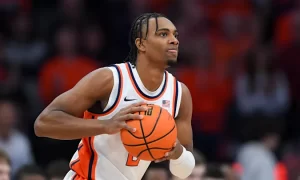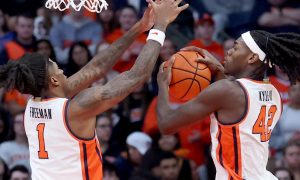A sweeping reset hit the Jets front office this offseason when they handed Justin Fields a two-year, $40 million pact—$30 million guaranteed—signaling a full embrace of his dual-threat upside and a clear pivot in strategy.
Chicago’s 2021 first-round selection at No. 11, Fields delivered on the ground with more than 1,100 rushing yards in 2022 and twice crossed the 100-yard mark, including a 178-yard game that set a league record.
That early burst of production kept him on the radar, especially across bitcoin sports betting sites, where faster payouts and wider markets continue to attract those following emerging talent. Still, his struggles as a passer eventually led Chicago to move on, trading him to Pittsburgh in 2024 as they shifted direction.
In Pittsburgh, Fields showed marked improvement. Across six starts, he posted a 4–2 record while completing 66% of his passes (1,106 yards, 5 TD, 1 INT), adding 289 rushing yards and five more scores on the ground. His passer rating climbed to a career-high 93.9 while his turnover rate dropped significantly—proof that his game had taken a turn.
That midseason rebound caught the Jets’ eye. Rather than gamble on a rookie quarterback in the 2025 draft, they instead poured resources into building around Fields—selecting offensive tackle Armand Membou, tight end Mason Taylor, and receiver Arian Smith to optimize protection and weapons. Their goal: craft an offense that maximizes his athleticism without forcing him into a system built for someone else.
Fields brings rare athletic attributes—at 6’3″, 227 pounds, he runs a 4.59-second 40-yard dash and offers explosive open-field speed. However, his passing still requires refinement: last season’s completion rate and passer rating were decent, but still left room for growth.
Fields now enters a system tailored to his skill set, with Garrett Wilson—his former Ohio State teammate who recently reaffirmed his long-term commitment to the team—alongside rising backs Breece Hall and Braelon Allen. This setup is designed to give Fields the space and confidence he’s lacked.
Now, with accountability front and center, Fields has clear metrics to meet. A completion rate north of 65%, a low turnover rate, and sustained ground production would validate the team’s strategy.
If the accuracy holds and the turnovers stay low, Fields moves beyond the fringe talk and puts himself in the conversation as a regular starter, not just a placeholder with upside.
For a 26-year‑old quarterback with speed, arm talent, and a new stage, this isn’t just another stop—it might define his legacy. The Jets have believed in Fields enough to rebuild around him. His next season will reveal whether that faith was well placed.
The early buzz is already encouraging. At spring OTAs, first-year head coach Aaron Glenn impressed players with a no-nonsense approach, while Justin Fields, working alongside new offensive coordinator Tanner Engstrand, told reporters he’s committed to becoming more than just a dynamic runner.
Even quarterbacks wore GoPro cameras in practice, part of a film-study revolution that leaves little to chance. Behind the scenes, the Jets doubled down on analytics, doubling their analytical staff to bring more data into game planning.If everything falls into place under Aaron Glenn, Fields could emerge as the signal-caller who finally turned raw tools into results, just as his new head coach predicted earlier this spring. And in New York, he may finally have the chance to prove it.


















